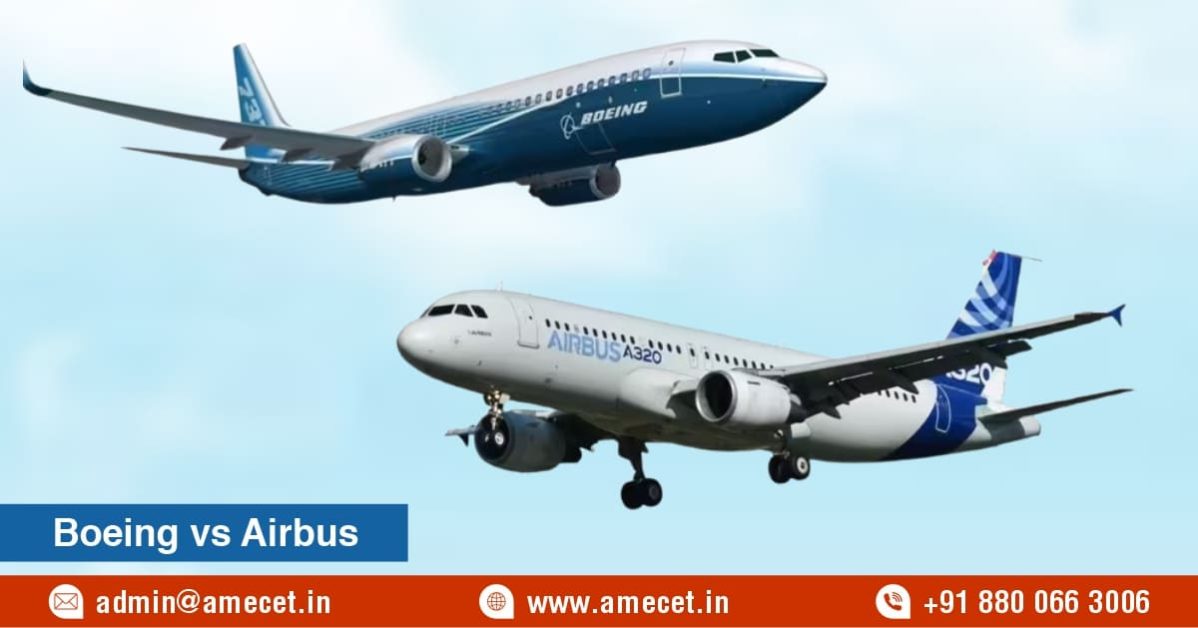Boeing vs. Airbus: A Technical Perspective for Aspiring Aircraft Engineers
Posted on : 28 March, 2025 6:39 pm
The aviation industry has long been dominated by two major aircraft manufacturers—Boeing and Airbus. Both companies have played a crucial role in shaping modern aviation, offering cutting-edge aircraft that power global air travel. For aspiring aircraft engineers, understanding the technical differences between Boeing and Airbus can provide valuable insights into aerodynamics, avionics, materials, and maintenance.
1. Aircraft Design Philosophy
One of the fundamental differences between Boeing and Airbus is their design philosophy. Boeing traditionally follows a pilot-centric approach, offering manual override options, whereas Airbus employs a fly-by-wire system, relying heavily on automation.
- Boeing: The company prioritizes direct pilot control with traditional yokes and more manual systems, allowing pilots to intervene when necessary.
- Airbus: Airbus aircraft use sidestick controllers and full automation, reducing pilot workload and relying on computer-assisted flight management.
2. Fly-by-Wire Technology
Airbus pioneered fly-by-wire (FBW) technology with the A320 series, which replaces conventional manual controls with electronic signals. Boeing adopted FBW later, integrating it into aircraft like the 777 and 787, but still allows more manual intervention compared to Airbus.
- Airbus: Fully integrated fly-by-wire systems with pre-programmed protections to prevent human error.
- Boeing: Hybrid FBW systems with greater pilot authority in critical situations.
3. Avionics and Cockpit Systems
The cockpit layout in Boeing and Airbus aircraft differs significantly.
- Airbus Cockpit: Standardized design across all models, featuring a digital sidestick, overhead panel, and uniform avionics.
- Boeing Cockpit: Maintains a traditional yoke and varies across aircraft models, requiring pilots to undergo type-rating training when switching aircraft.
4. Structural Composition and Materials
Both manufacturers have evolved their materials for better fuel efficiency and reduced weight.
- Boeing: Uses composite materials extensively in the 787 Dreamliner, making it lighter and more fuel-efficient.
- Airbus: Employs advanced aluminum-lithium alloys in aircraft like the A350, striking a balance between strength and weight reduction.
5. Engine Choices and Performance
Boeing and Airbus collaborate with major engine manufacturers such as General Electric, Rolls-Royce, and Pratt & Whitney to power their aircraft.
- Boeing: Works closely with GE and Rolls-Royce, offering engine flexibility on models like the 787 and 777X.
- Airbus: Offers a wider range of engine choices, including Pratt & Whitney’s geared turbofan engines on the A320neo series for better fuel efficiency.
6. Fuel Efficiency and Operational Costs
Fuel efficiency is a key factor for airlines, and both manufacturers compete to offer better mileage per flight.
- Boeing: The 787 Dreamliner offers 20-25% fuel savings compared to previous models.
- Airbus: The A350 XWB boasts improved aerodynamics and fuel efficiency, making it a competitor to the 787.
7. Maintenance and Engineering Challenges
For aircraft engineers, maintenance plays a vital role in fleet management.
- Boeing: Aircraft are often designed for easier manual maintenance, with readily accessible components.
- Airbus: Uses advanced diagnostic tools for predictive maintenance, reducing downtime but requiring specialized training.
8. Safety and Reliability
Both Boeing and Airbus prioritize safety, but their approaches differ.
- Boeing: Relies on redundant systems and pilot intervention to address issues.
- Airbus: Uses automated safeguards to prevent dangerous flight conditions.
For aspiring aircraft engineers, understanding Boeing and Airbus’ technical differences is crucial for career growth in the aviation industry. Whether working with Boeing’s pilot-centric designs or Airbus’ automation-driven approach, engineers must stay updated on advancements in aircraft technology, materials, and maintenance procedures. Ultimately, both manufacturers contribute significantly to global aviation, offering unique engineering challenges and opportunities for the next generation of aircraft professionals.

